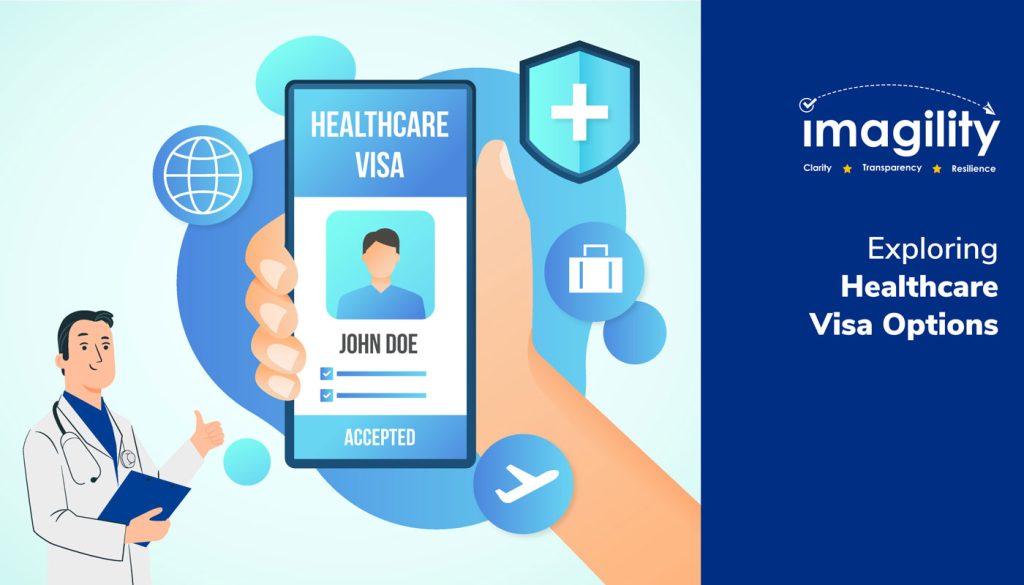The United States offers a myriad of opportunities for healthcare professionals, from cutting-edge research to world-class medical facilities. However, for international healthcare workers, navigating the complex web of US immigration laws and visa options can be overwhelming.
This blog post will delve into the most common healthcare visa categories and provide essential insights to help you embark on a successful career in the U.S.
Lets begin.
1. H-1B Visa
This is one of the most popular options for healthcare professionals seeking temporary employment in the U.S. It is designed for individuals in specialty occupations, including doctors, nurses, pharmacists, and medical researchers. To qualify for an H-1B visa, you must have a U.S. employer sponsor you and prove that you possess the required qualifications and expertise.
The employer must demonstrate that your position is specialized and they file a complete H1B visa petition on your behalf.
2. J-1 Visa
J-1 visa is primarily intended for cultural exchange programs and research. It can be used by healthcare professionals for medical residencies, fellowships, or research opportunities. The J-1 visa often requires a commitment to return to your home country after completing your program.
3. TN Visa
TN visa is available to citizens of Canada and Mexico who have professional qualifications in a specific field, including healthcare. To qualify for a TN visa, you must have a job offer from a U.S. employer and meet the educational and experience requirements.
4. H-2A Visa
For temporary agricultural workers, including healthcare assistants in rural areas, the H-2A visa is available. This visa requires a labor certification process to demonstrate that there are not enough qualified U.S. workers available to fill the positions.
5. EB-1 Visa
For exceptional healthcare professionals, the EB-1 visa category may be an option. This category is reserved for individuals who have a national or international reputation in their field and can demonstrate extraordinary ability.
6. O-1 Visa
If you’re a distinguished individual in the field of healthcare, the O-1 visa may be applicable. You’ll need to demonstrate extraordinary ability or achievement in your field and have a job offer in the U.S. This way, you can get an O-1 visa and enter the US to pursue your healthcare career.
7. F-1 Visa
International students who have been accepted to a U.S. medical school can obtain an F-1 visa. The F-1 visa allows you to study in the U.S. for up to five years, including clinical rotations and residencies.
Key Considerations for Healthcare Professionals
- Employer Sponsorship
Most healthcare visas require a U.S. employer to sponsor you. It’s essential to start networking with potential employers early on and secure a job offer before applying for a visa.
- Qualifications and Licensing
Ensure that your educational credentials and professional licenses are recognized and accepted in the U.S. You may need to undergo additional training or examinations to obtain the necessary certifications.
- Visa Quotas
Some visas, such as the H-1B, have annual quotas. This means that the number of visas issued each year is limited. It’s crucial to apply early and be prepared for potential competition.
- Financial Requirements
You may need to demonstrate financial stability to cover living expenses and medical insurance costs while in the U.S.
Conclusion
Navigating the complex world of healthcare visas can be daunting. However, carefully considering your healthcare visa options and consulting with an immigration attorney, you can increase your chances of successfully obtaining the visa that best suits your healthcare career and goals. You can also take the help of our immigration software which enables you to connect with experienced attorneys to take care of health care visa needs.
Good luck!









